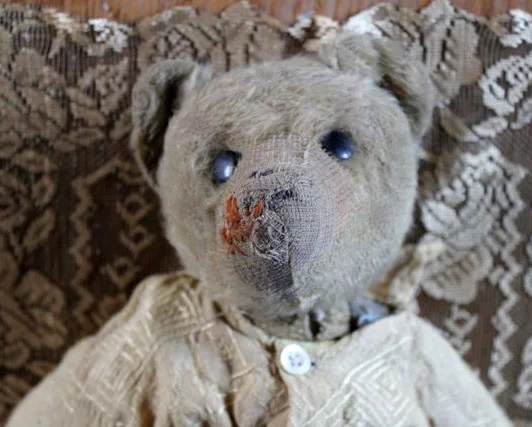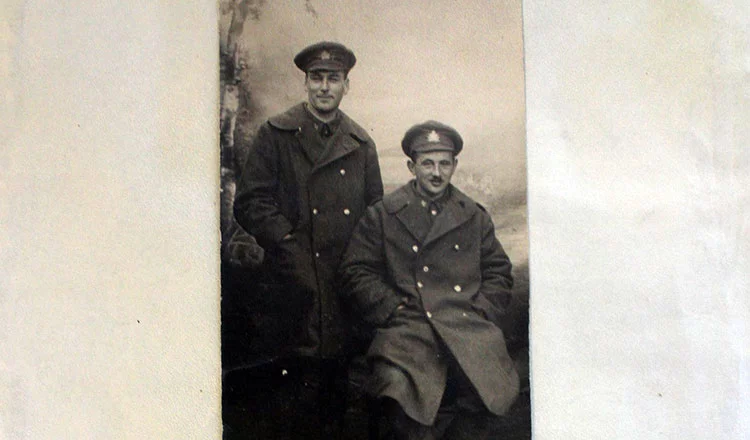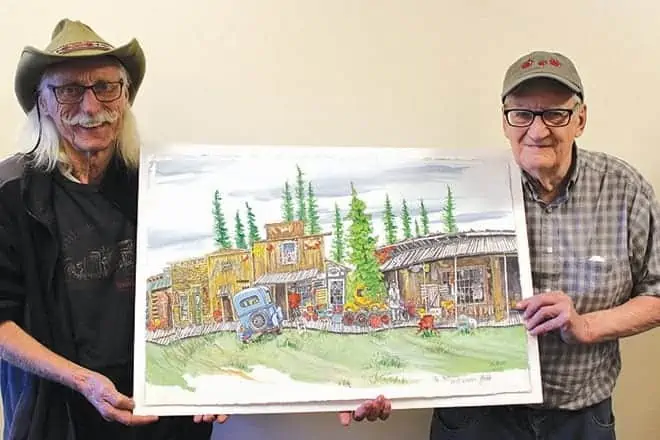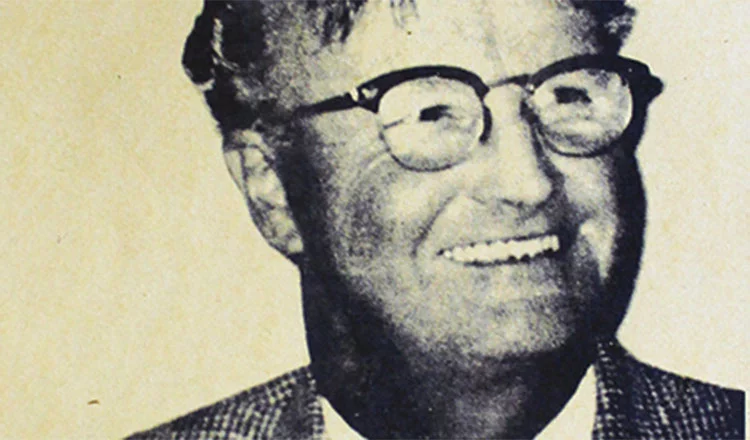
“I don’t know its full history but I found it in an old trunk. It must be from the early 1900s,” said Sid, carrying the teddy. “Everything is homemade. Someone’s pride and joy.” Sid set the teddy bear down on his coffee table so we could have a better look at the toy.
“From the Depression era. I found it at a friend’s farm in Alberta, so it must have belonged to a child from around there. You see the scraps of cloth they used to make it?” It’s amazing that this bear has survived so long and remains intact. It was once fuzzy, but has now lost much of its artificial fur. We found stitches of different coloured embroidery thread throughout the teddy. Previous attempts at mending the worn and well-loved toy.
“Instead of buying something new, you had to make one and make presents. It’s been resewn but has his real buttons and clothes.”
The teddy bear’s head is sewn onto its torso. The arms and legs are adjustable. The clothing on the toy is a mix of machine and hand-sewn work. One foot points forward while the other veers to the left. It was clear to us that this toy was very special to someone.
History tells us teddy bears get their name from former United States President Theodore “Teddy” Roosevelt. The term originally derived from a political cartoon published in the Washington Post in 1902. It depicted President Roosevelt on a hunting trip, refusing to shoot a bear that was tied to a tree. Stuffed toy bears have been called teddy bears ever since.
I asked Sid if he had anything like this teddy when he was a child. He scoffed.
“No, we had no toys, just blocks of wood. There was nothing then, nothing to make a teddy bear from either.” I believe this teddy bear found where it was meant to be, in the hands of a man who never had a toy growing up. The older we get, the more we reminisce about the little things from our childhood. I, myself, have a stuffed mouse that will forever be a part of my life.
What’s your teddy bear?




